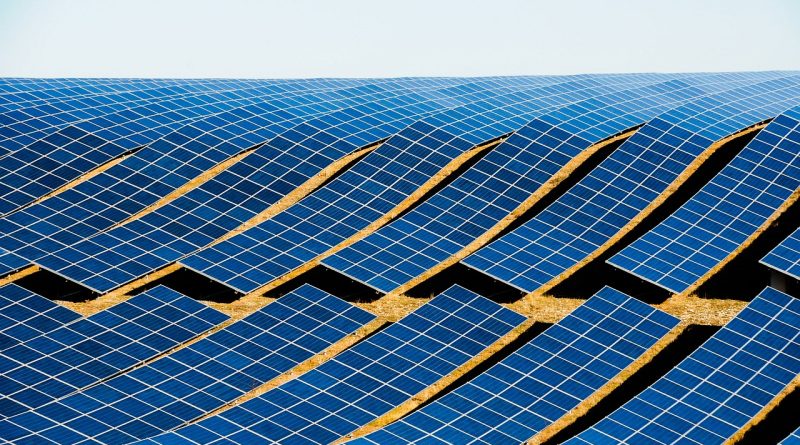On-Grid Rooftop Installation: Explained
On-grid rooftop installation is gaining popularity as a cost-effective and environmentally friendly solution for generating electricity. Whether you are a homeowner or a business owner, harnessing the power of the sun can be a wise investment. In this blog, we will explore what it is, how it works, and the numerous advantages it offers. So, let’s dive in and discover the wonders of it!
Table of Contents
What is On-Grid Rooftop Installation?
Solar panels on rooftops actively generate electricity, which the building utilizes. Additionally, any surplus power can be sent back to the grid. Conversely, when solar generation is insufficient, the system draws electricity from the grid. Net metering crucially allows crediting surplus electricity to the owner’s electricity bill, thereby effectively reducing their overall costs.
How does it Work?
The on-grid rooftop installation consists of three key components: solar panels, an inverter, and the local power grid. On-grid rooftop installation involves connecting solar panels to the local power grid after installing them on a building’s roof. Additionally, this installation empowers the panels to generate solar energy for on-site use, and any excess energy gets fed back into the grid. Through net metering, the owner’s electricity bill receives credits for the surplus electricity, effectively reducing overall costs. In this way, the building owner becomes a contributor to the overall electricity supply in their area.
Advantages of On-Grid Rooftop Installation
There are numerous advantages to choosing on-grid rooftop installation for your solar energy needs. Let’s explore some of the key benefits below:
1. Financial Savings: By generating your own electricity, you can significantly reduce or even eliminate your monthly electricity bills. You can receive a credit to your account for any excess electricity generated, further reducing costs.
2. Return on Investment (ROI): It provides a lucrative return on investment. The system typically recovers the initial installation cost within a few years through savings on electricity bills.
3. Environmentally Friendly: Switching to solar energy reduces reliance on fossil fuels, helping to combat climate change and reduce greenhouse gas emissions.
4. Energy Independence: With an on-grid rooftop installation, you are no longer solely dependent on the grid for your electricity needs. This provides a sense of security during power outages or grid failures.
5. Low Maintenance: To ensure optimal performance, solar panels need minimal maintenance, requiring only occasional cleaning and inspection.
6. Increased Property Value: Properties equipped with on-grid rooftop installations tend to have higher market value due to the lower electricity costs and environmental appeal to potential buyers.
Conclusion
Transitioning to on-grid rooftop installation is a highly efficient and forward-thinking choice for harnessing the sun’s power. By strategically placing solar panels on your roof and connecting to the local power grid, you unlock a myriad of benefits. Not only can you significantly reduce your electricity bills, but you also play a vital role in contributing to a sustainable future while ensuring a sense of energy security. The advantages of on-grid rooftop installation, encompassing financial savings, return on investment (ROI), environmental friendliness, and boosted property value, make it a wise and prudent investment for homeowners and businesses alike. Embrace the power of the sun today and experience the multifaceted benefits that on-grid rooftop installation with SolarClue® brings to your doorstep!
Frequently Asked Questions
On-grid rooftop installation entails the establishment of solar panels on rooftops, which are then connected to the electrical grid. This setup enables users to generate and utilize solar power while remaining connected to the grid.
Solar panels on rooftops generate electricity, which is then used in the building. Any excess power can be sent back to the grid, and electricity from the grid is drawn when solar generation is insufficient.
Benefits include reduced electricity bills, potential income from excess energy sales, and the ability to draw power from the grid during periods of low solar generation.
Typically, on-grid rooftop systems don’t require batteries as they can rely on the grid for power when solar generation is low. However, some installations may include storage for backup.
Many governments offer incentives such as tax credits or feed-in tariffs to encourage on-grid rooftop installations and promote the use of renewable energy.
Most on-grid systems shut down during power outages to ensure the safety of utility workers. Backup power solutions may be available in some installations.
On average, solar panels in on-grid installations have a lifespan of 25 to 30 years. Regular maintenance can help maximize their efficiency over time.
While many roof types can accommodate solar panels, optimal results are achieved on roofs with good sun exposure and structural integrity.
The payback period varies based on factors like system size, local electricity rates, and available incentives. Many users see a return on investment within 5 to 10 years.
Yes, on-grid rooftop systems can often be expanded by adding more solar panels to increase capacity as energy needs grow or if additional roof space becomes available.



